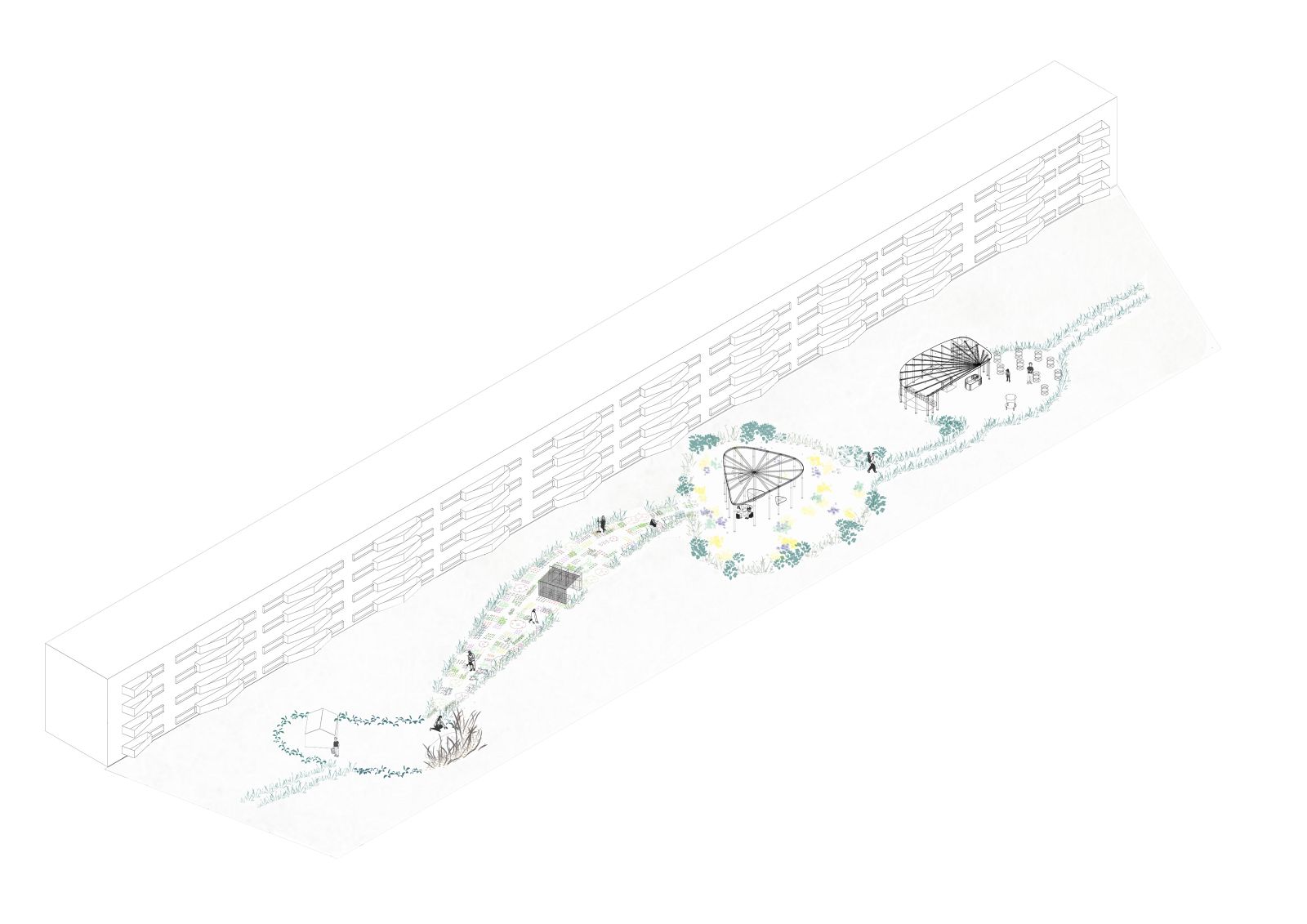
A garden is a multifunctional place.
It is a place of discovery for the youngest and the oldest. It is a place where family, friends, and neighbours can gather. It is a place that can be cultivated and explored. It is a place that generates pleasant memories.
GRADUATION PROJECT
In our modern city, concrete environment stretches afield, both horizontally and vertically. It generates a monotonous perspective. A form of unnatural habitat in itself.
Collective housing contributes to the creation of this concrete desert. It has a limited amount of space to offer to its inhabitants, and we can often observe a lack of function concerning the green areas that surround them. It is usually a green area with a path and some trees growing there.
This dull environment is contrasting with the cultural diversity of the users of these concrete blocks. Indeed, Collective housing is a place of mutual support and has the potential to make an essential contribution to social inclusion in our demography.
In collective buildings, inhabitants live in limited space. The empty terrain below the building is a potential extra space to share. It is important to offer new perspectives to these spaces, greener, calmer, and prosperous. It is time to rethink the connection between architecture and natural spaces. By giving a function to these forgotten green spaces, inhabitants could reconnect with this natural environment.
In the suburbs of The Hague, two buildings with a deserted garden offer a very gloomy view. Nobody is using this space. It feels like inhabitants ended up resigning themselves to avoid any projection in a place deprived of functions.
The goal of this intervention is to strengthen the community and improve inhabitants' conditions by giving them extra-shared spaces. This will also improve their quality of life and bring vibrant experiences in the garden.


THESIS
Collective Housing. A Micro City In The City.
Collective housing has reshaped cities and has redefined the idea of cohabitation. Since its conception, collective housing has aroused many curiosities and offered new social and architectural perspectives. Whether social or urban, facing these new habitats, the city’s organization changes.
The image of quarters, in megacities or in smaller cities around it, is no longer only about a group of individual houses that are agglomerated around the city’s facilities such as the market district, the riverside district, etc. The city is composed by various forms of housing that can, sometimes, represent by itself a neighborhood and, as a matter of fact, adds new areas to the city.
These significant changes in terms of number of inhabitants per square meter, also raises numerous questions.